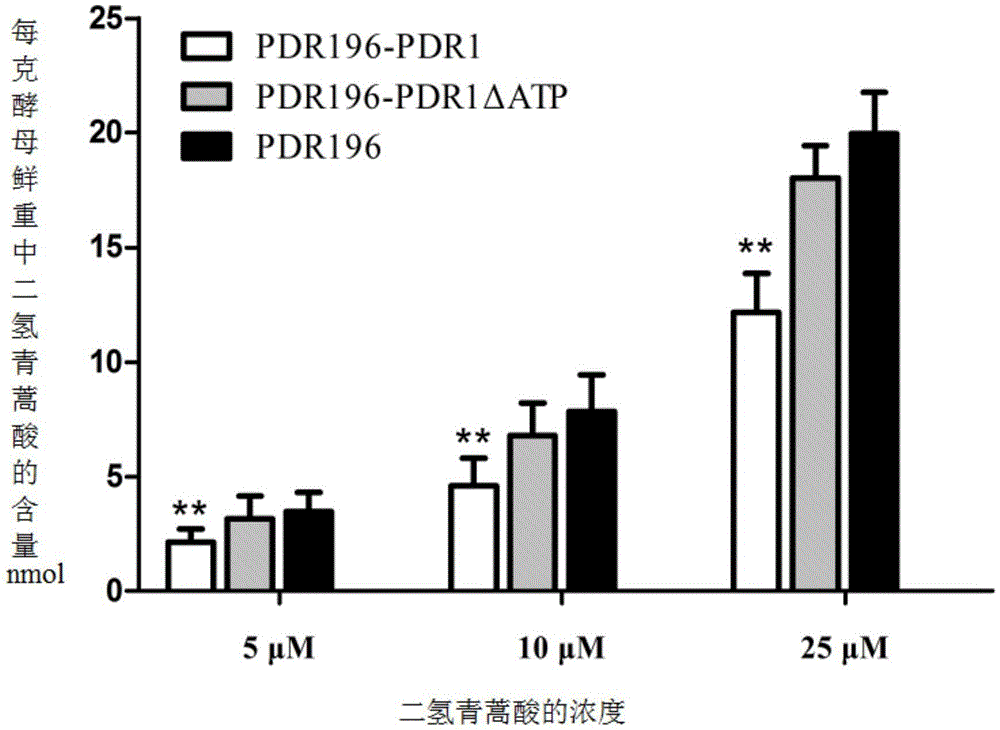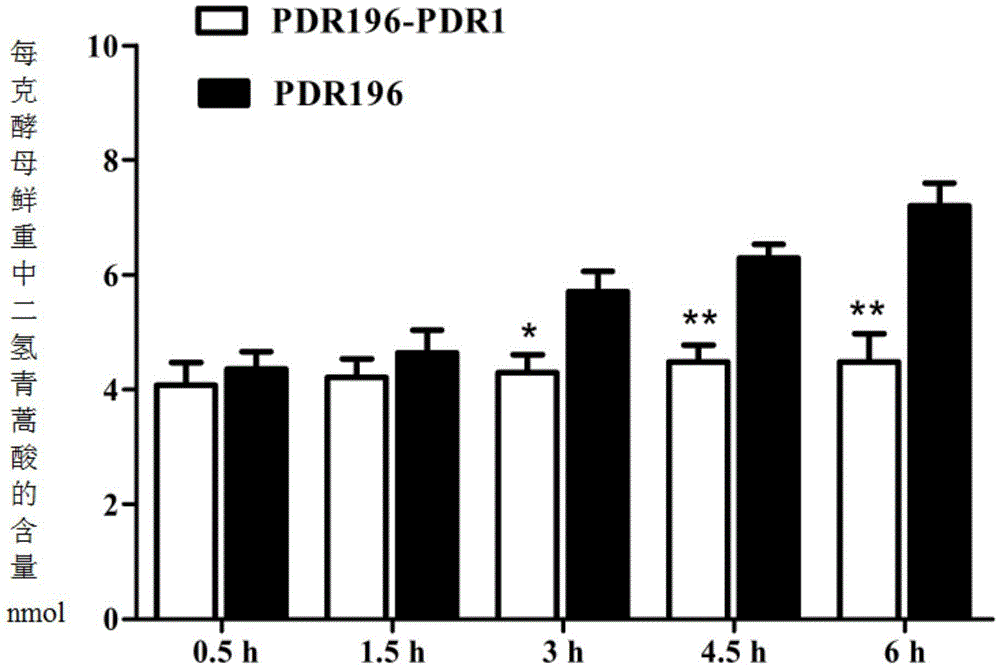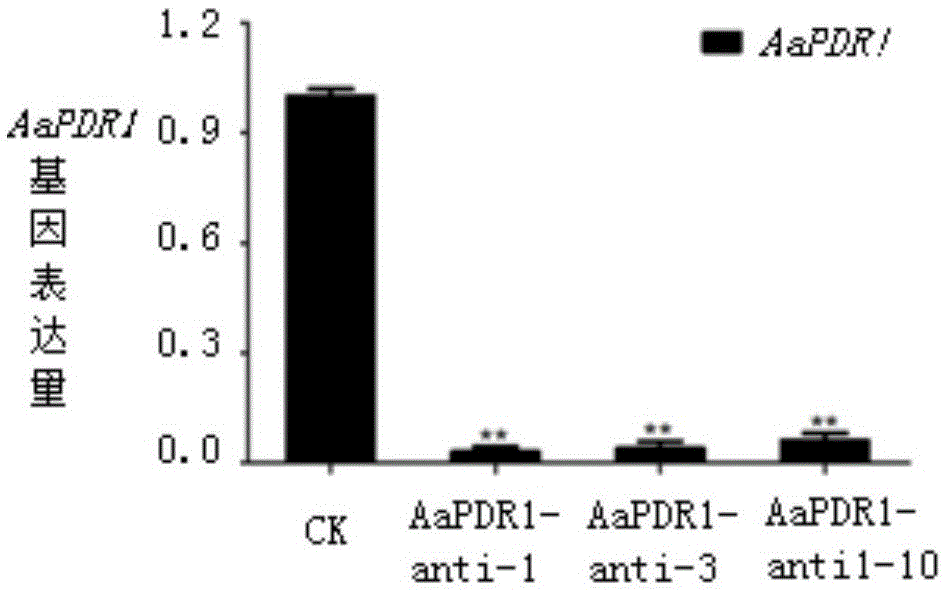Artemisia annua L. PDR sub-family transport protein and functional verification method and application thereof
A technology for transporter and function verification, applied in the field of Artemisia annua PDR subfamily transporter and its function verification, can solve the problems such as the inability to effectively meet the market demand and the low content of artemisinin
- Summary
- Abstract
- Description
- Claims
- Application Information
AI Technical Summary
Problems solved by technology
Method used
Image
Examples
Embodiment 1
[0050] Embodiment 1, cloning of Artemisia annua AaPDR1 gene
[0051] 1. Extraction of Total RNA from Artemisia annua Genome
[0052] Take the leaf tissue of Artemisia annua, grind it in liquid nitrogen, add it to a 1.5mL Eppendorf (EP) centrifuge tube filled with lysate, shake it fully, and extract total RNA according to the instructions of the TIANGEN kit. The quality of total RNA was identified by agarose gel electrophoresis, and then the RNA content was determined on a spectrophotometer.
[0053] 2. Cloning of the AaPDR1 gene of Artemisia annua
[0054] Using the extracted total RNA as a template, cDNA was synthesized under the action of PowerScript reverse transcriptase; gene-specific primers were designed according to the sequence of the AaPDR1 gene, and the AaPDR1 gene was amplified from the total cDNA by PCR and sequenced. The inventor has completed the whole genome sequencing and transcriptome sequencing of Artemisia annua, and the sequence of AaPDR1 gene comes fro...
Embodiment 2
[0060] Embodiment 2, the construction of the yeast expression vector containing AaPDR1 gene
[0061] The AaPDR1 gene was constructed on the yeast expression vector. In order to facilitate the construction of the expression vector, the restriction site of SpelI was introduced into the forward primer, and the restriction site of PstI was introduced into the reverse primer. The primers are shown in Table 3;
[0062] The PCR primers that table 3AaPDR1-PDR196 vector constructs
[0063]
Embodiment 3
[0064] Example 3, AaPDR1 transporter yeast mutant AD12345678 transport experiment
[0065] 1. Transformation of yeast AD12345678
[0066] 1.1 Competent state preparation
[0067] Take out the AD12345678 strain at -70°C and streak it on the YPD medium, culture it at 28°C for three days, pick the faster-growing clones and culture them overnight in 10 mL of YPD liquid medium (28°C, 220rpm), and test the next day After OD600, dilute the bacterial solution to a concentration of 0.4, continue to shake the bacteria for 2-4 hours, centrifuge at room temperature 2500rpm for 10min, remove the supernatant, then suspend with 40mL 1×TE (or sterilized water), centrifuge at room temperature 2500rpm for 10min, carefully remove the supernatant , suspended in 2 mL of 1×LiAC / 0.5×TE, and left at room temperature for 10 minutes, they are yeast competent cells.
[0068] 1.2 Yeast Transformation
[0069] Add 1.5 μL of plasmid into a sterile 1.5mL centrifuge tube, then add 10 μL of 10 mg / mL salm...
PUM
 Login to View More
Login to View More Abstract
Description
Claims
Application Information
 Login to View More
Login to View More - R&D
- Intellectual Property
- Life Sciences
- Materials
- Tech Scout
- Unparalleled Data Quality
- Higher Quality Content
- 60% Fewer Hallucinations
Browse by: Latest US Patents, China's latest patents, Technical Efficacy Thesaurus, Application Domain, Technology Topic, Popular Technical Reports.
© 2025 PatSnap. All rights reserved.Legal|Privacy policy|Modern Slavery Act Transparency Statement|Sitemap|About US| Contact US: help@patsnap.com



